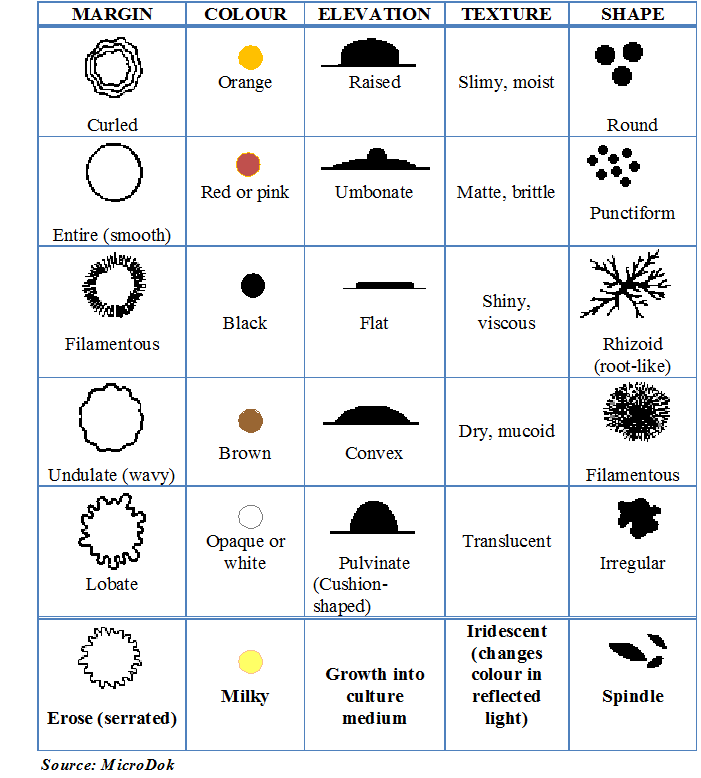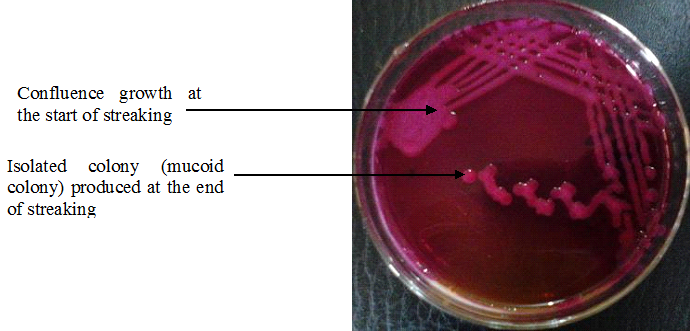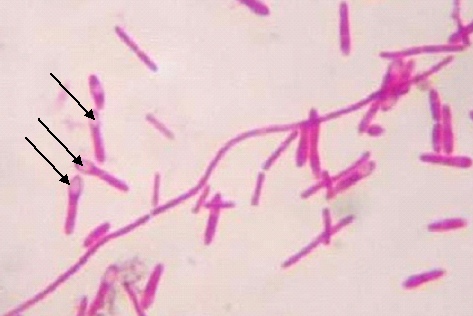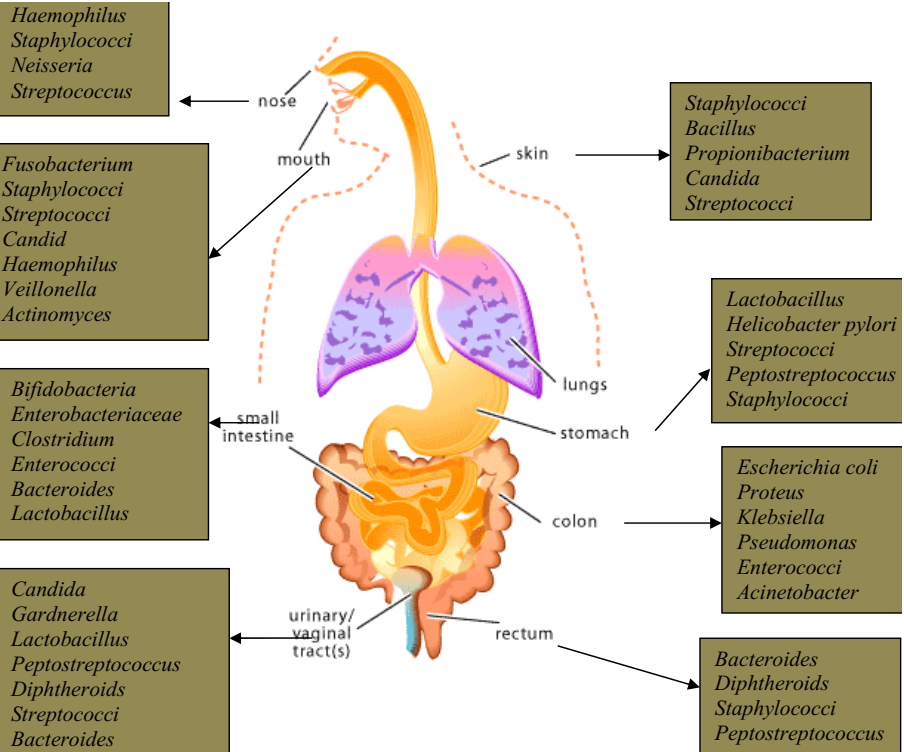Microorganisms produce definite patterns on culture media plates as they grow and divide. These specific patterns (inclusive of shapes and sizes) also aid in the preliminary identification of the organisms for further characterization. Colonial morphology is the size, shape, colour, texture and the general structure of an individual colony of a particular microorganism (in this case bacterium or fungus) on a culture media plate that supports its growth. These specific features (as outlined in Table 1) which are unique to bacteria and fungi are used for the preliminary identification of a bacterium in the microbiology laboratory. Colonial morphology which can also be referred to as cultural characteristics pertains to the macroscopic appearance of a bacterium on different kinds of growth culture media. A microscope is usually not required to establish the cultural characteristics of a bacterium, rather the visible eyes is mostly used for the identification. However, microscopical examination of colonial characteristics of a bacterium may be necessary, for example when examining the margin/edge of a bacterium in order to decipher if it is actually smooth or filamentous.
Table 1. Schematic illustrations of the colonial/cultural characteristics of bacteria on solid media

A colony is a macroscopically visible population of cells growing on solid media, and that arises from a single cell; and microorganisms (particularly bacteria and fungi) are presumptively recognized on solid agar media or plates based on some unique growth features which they express on such growth media (Figure 1). Microorganisms (bacteria and fungi) grow as colonies on solid culture media. The growth of a bacterium or fungus in or on a solid growth media is thus taken into consideration when characterizing the organism. The colony of an organism is visibly studied when establishing the cultural characteristics of a bacterium. The appearance of bacterial of fungal colonies on a culture media plate is generally species-specific and can be very helpful in identifying isolates on individual basis. The size of a bacterium can be measured using a meter rule to determine its diameter. Bacterial colonies can vary from large colonies to tiny colonies that are less than 1 mm. A bacterium that is less than 1 mm in size is generally called punctiform (i.e. pin-point). The appearances of observed colonial growth of a bacterium on a solid culture media plate are as outlined in Table 1.

REFERENCES
Atlas R.M (2010). Handbook of Microbiological Media. Fourth edition. American Society of Microbiology Press, USA.
Balows A, Hausler W, Herrmann K.L, Isenberg H.D and Shadomy H.J (1991). Manual of clinical microbiology. 5th ed. American Society of Microbiology Press, USA.
Basic laboratory procedures in clinical bacteriology. World Health Organization (WHO), 1991. Available from WHO publications, 1211 Geneva, 27-Switzerland.
Black, J.G. (2008). Microbiology: Principles and Explorations (7th ed.). Hoboken, NJ: J. Wiley & Sons.
Garcia L.S (2010). Clinical Microbiology Procedures Handbook. Third edition. American Society of Microbiology Press, USA.
Garcia L.S (2014). Clinical Laboratory Management. First edition. American Society of Microbiology Press, USA.
Ira R (1995). Bacteriology, Standard Operative procedure manual for microbiology laboratories, National Institute of Biologicals. Pp. 73-97.
Madigan M.T., Martinko J.M., Dunlap P.V and Clark D.P (2009). Brock Biology of Microorganisms, 12th edition. Pearson Benjamin Cummings Inc, USA.
Woods GL and Washington JA (1995). The Clinician and the Microbiology Laboratory. Mandell GL, Bennett JE, Dolin R (eds): Principles and Practice of Infectious Diseases. 4th ed. Churchill Livingstone, New York.
Discover more from Microbiology Class
Subscribe to get the latest posts sent to your email.




